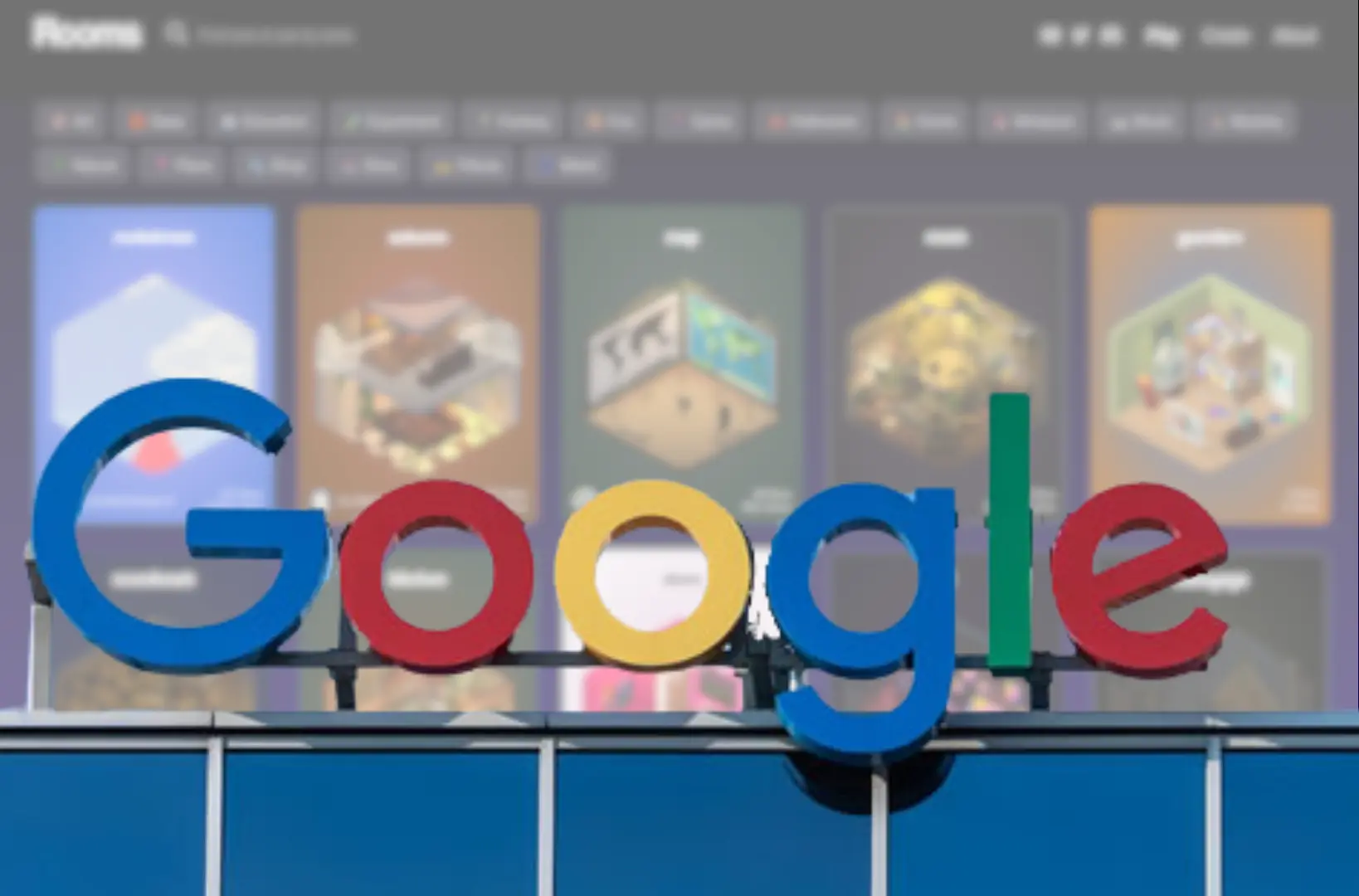In a strategic move highlighting the increasing significance of virtual design platforms, Google has invested $1 million in the 3D design application Rooms after users collectively created over one million virtual spaces. This investment signals Google’s recognition of the rising demand for interactive 3D design tools and the future of virtual spaces.
This blog explores the Rooms platform, Google’s investment strategy, the impact of artificial intelligence (AI) on 3D design, and how this investment could reshape the future of virtual spaces.
What are Rooms?
Rooms is a powerful 3D design application that enables users to create, customize, and interact with digital environments. Developed by Things, Inc., a startup founded by former Google employees Jason Toff, Bruno Oliveira, and Nick Kruge, the app allows users to build intricate 3D spaces using an extensive library of objects and animations.
Unlike traditional 3D design software, which often requires advanced skills, Rooms is designed for both professionals and beginners. It provides an intuitive drag-and-drop interface, making it accessible to users without any prior 3D modeling experience.
One of the platform’s standout features is its ability to integrate coding functionality using Lua, a lightweight programming language. This allows users to add interactivity, animations, and logic to their digital spaces, transforming static designs into dynamic, interactive environments.
Key Features of Rooms
Rooms have gained popularity due to their rich set of features that make 3D design easier and more interactive. Here are some of the key features that have contributed to its success:
1. Extensive Asset Library
Rooms offer a library of over 10,000 digital items, ranging from furniture and decorations to animated objects and customizable avatars. This expansive collection allows users to create diverse and personalized spaces without needing external 3D models.
2. Coding and Interactivity
A standout feature of Rooms is its integration of the Lua programming language. This allows users to:
- Add custom animations to objects
- Create interactive elements such as doors, buttons, and portals
- Develop mini-games within their 3D environments
For users who are not proficient in coding, the app also includes a visual scripting tool, enabling them to incorporate basic interactivity without writing a single line of code.
3. TikTok-Style Discovery Feed
Rooms include a TikTok-style vertical feed that allows users to browse, share, and explore 3D spaces created by others. This fosters a sense of community and encourages collaboration among designers, developers, and enthusiasts.
4. Actions Editor for Animations
In November 2024, Rooms launched its Actions Editor as part of version 3.0. This feature lets users animate objects without needing any coding knowledge. The introduction of this tool has expanded accessibility, making it easier for non-technical users to create dynamic 3D spaces.
The Growth and Success of Rooms
Since its launch in early 2023, Rooms has seen rapid adoption. Some key milestones include:
- Over 250,000 registered users actively using the platform
- More than 1 million unique virtual rooms created
- A steadily growing creator community sharing their work and collaborating
Rooms have particularly gained traction among:
- Interior designers use it to visualize home and office layouts
- Game developers building 3D prototypes and mini-games
- Educators and students learning coding through interactive design
With an increasing number of users and applications, the potential of Rooms continues to expand, attracting attention from major tech investors like Google.
Google’s $1 Million Investment: A Strategic Move
Google’s decision to invest $1 million in Rooms is not just a financial contribution—it is a calculated strategic move. The investment was made through a Simple Agreement for Future Equity (SAFE), indicating Google’s intention to participate in Rooms’ anticipated Series A funding round.
Why Did Google Invest in Rooms?
Several factors influenced Google’s investment in Rooms:
- The Growing Demand for 3D Design
- With the rise of the metaverse, virtual reality (VR), and augmented reality (AR), the need for accessible 3D design tools is greater than ever.
- Rooms align with Google’s vision of expanding digital creativity tools for mainstream users.
- Integration with Google’s AI and Cloud Services
- Rooms can benefit from Google’s AI technology, improving features like real-time object recognition and automatic scene generation.
- Google’s cloud infrastructure could help Rooms scale its services efficiently.
- Potential for Future Mergers or Acquisitions
- Google has a history of acquiring promising startups that align with its long-term goals.
- Investing in Rooms early gives Google a competitive edge in the growing 3D design space.
AI Integration: Google’s Gemini AI in Rooms
As part of its collaboration, Rooms has received early access to Google’s Gemini AI technology. This partnership aims to enhance the app’s capabilities, making 3D design smarter and more interactive.
AI-Powered Features Coming to Rooms:
- Text-to-Speech for 3D Narration
- Users can add AI-generated voiceovers to their virtual spaces.
- The AI can generate voices in different tones such as happy, calm, or professional.
- AI-Based Object Generation
- Future updates may allow users to describe objects in text and have them automatically generated in 3D.
- Automated Animation & Interaction
- AI will assist in creating smoother animations without requiring manual coding.
These integrations will make Rooms more accessible to beginners while empowering advanced users to create more realistic and interactive environments.
The Future of Virtual Spaces & 3D Design
Google’s investment in Rooms highlights the broader trend of increasing demand for virtual environments and 3D design tools. Several industries are expected to benefit:
1. Gaming & Entertainment
- Indie developers can rapidly prototype game environments.
- AI-powered tools can enhance storytelling in interactive experiences.
2. Interior Design & Real Estate
- Users can visualize renovations before making changes.
- Real estate agents can create virtual home tours for clients.
3. Education & Learning
- Students can learn programming and design through immersive experiences.
- AI-powered assistants can guide users through the creation process.
4. Collaboration & Remote Work
- Teams can build and explore virtual offices and meeting spaces.
- AI-driven features can automate design workflows, improving productivity.
With AI-driven tools and more intuitive interfaces, 3D design will become more mainstream and integrated into everyday life.
Conclusion
Google’s $1 million investment in Rooms marks an exciting turning point for 3D design applications. With its growing user base, expanding feature set, and AI-powered enhancements, Rooms is well-positioned to shape the future of virtual spaces.
As more industries embrace 3D environments, the demand for user-friendly design tools will only increase. With Google’s backing, Rooms is set to lead the way in making 3D creation accessible, interactive, and intelligent.
This is just the beginning—the future of virtual spaces has never looked more promising!
What are your thoughts on Google’s investment in Rooms? Would you use a 3D design tool like this? Let us know in the comments!
Suggested reads:
- Nintendo Switch 2 Teases Mario Kart as First Title
- YouTube Tests Multiplayer Mini-Games | A New Era of Engagement
- Nintendo Switch 2 Leak Reveals 360-Degree Console Render

Jahanzaib is a Content Contributor at Technado, specializing in cybersecurity. With expertise in identifying vulnerabilities and developing robust solutions, he delivers valuable insights into securing the digital landscape.








